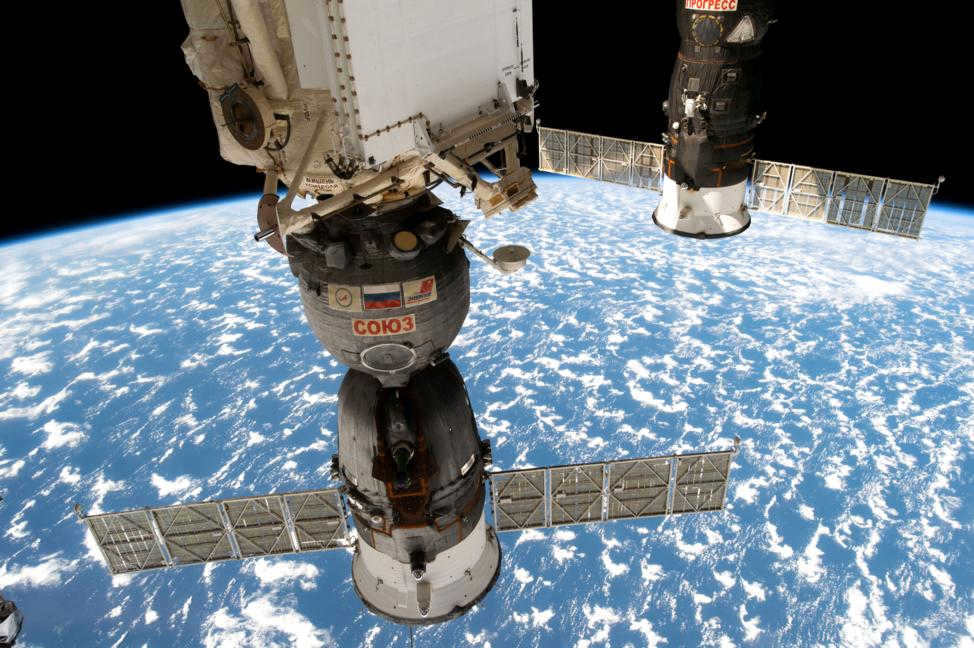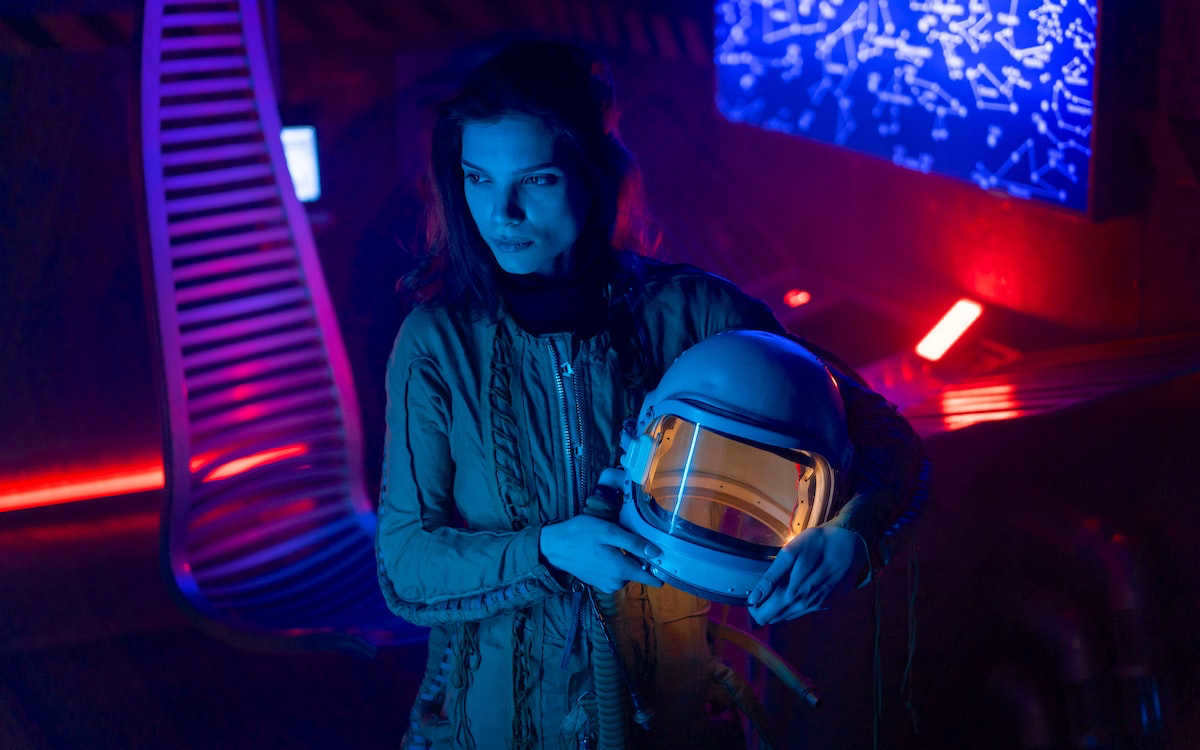
Actress Yulia Peresild became the fifth Russian to venture into space in the autumn of 2021, while Anna Kikina became the sixth in 2022. Out of the total number of individuals who have traveled to space, 71 of them are women, while more than 500 are men. What is the reason behind this gender disparity?
Key information about female astronauts
Since 1961, people have been venturing into outer space, and in 1963, the first woman from Earth made her historic flight. Over the years, women have achieved incredible feats in space, including setting records for spacewalks and enduring long-duration missions aboard the International Space Station. NASA has ambitious plans to send the first woman to the moon by 2024 through the Artemis program, which takes its name from Apollo’s twin sister.
In the 1960s, Dr. Randy Lovelace championed the idea that women could excel in space travel due to their smaller and lighter build, making them well-suited for compact spacecraft. His pioneering FLATs (Fellow Lady Astronaut Trainees) training program demonstrated that women could not only match but sometimes exceed the capabilities of their male counterparts. However, achieving gender equality in space crews may take many more decades to accomplish.
What is the number of female astronauts worldwide?
As of early November 2021, there have been over 600 individuals who have ventured into space, according to The New York Times. Among them, only 68 were women, accounting for a mere 11%. The majority of female astronauts were from the United States, with 53 in total. Additionally, Canada, China, Japan each had two female astronauts who went into orbit, while Great Britain, France, Italy, and South Korea each had one.
What is the number of female cosmonauts in Russia?
Currently, there have been a total of six women from Russia (including the USSR) who have embarked on space missions. These women include Valentina Tereshkova, Svetlana Savitskaya, Elena Kondakova, Elena Serova, Yulia Peresild, and Anna Kikina, with the most recent addition being Anna Kikina, who made her first spaceflight in 2022.
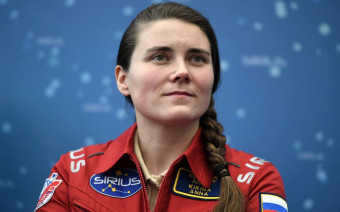
Valentina Tereshkova: The Pioneer of Female Cosmonauts
Valentina Tereshkova is renowned as the first female cosmonaut in history. On June 16, 1963, she embarked on her groundbreaking journey aboard the Vostok 6 spacecraft. Out of a pool of over 400 applicants, Tereshkova was chosen for this historic flight at the age of 26.
Born in the village of Maslennikovo, located northeast of Moscow, Tereshkova eagerly volunteered for the Soviet cosmonaut program following Yuri Gagarin’s monumental spaceflight on April 12, 1961. Although she lacked a pilot’s background, Tereshkova possessed an extensive skydiving resume with an impressive record of 126 jumps. She paved the way for future achievements by female cosmonauts, including Svetlana Savitskaya, who followed in 1982, and American astronauts Sally Ride, Judith Resnick, and Kathryn Sullivan, who made history in 1984.
“No more individuals in space!”
That’s what Sergei Korolev reportedly exclaimed following the return of the first female cosmonaut, Valentina Tereshkova. He didn’t hold back in his words, using less refined language, and was clearly upset.
Valentina Tereshkova’s conduct and condition in space were indeed far from exemplary: she experienced dizziness, nausea, neglected to complete the required logbook, had inconsistent communication, even fell asleep at one point, and failed to carry out planned experiments. Upon returning to Earth, she disregarded all instructions and offered the locals space tubes meant for research, while she indulged in boiled potatoes and kvass.
Korolev was so enraged by all this lack of professionalism that he made a vow that no woman would ever fly into space again as long as he was alive. And indeed, no woman did. It wasn’t until 1982, a whole 20 years after Tereshkova, that Svetlana Savitskaya finally ventured into orbit.
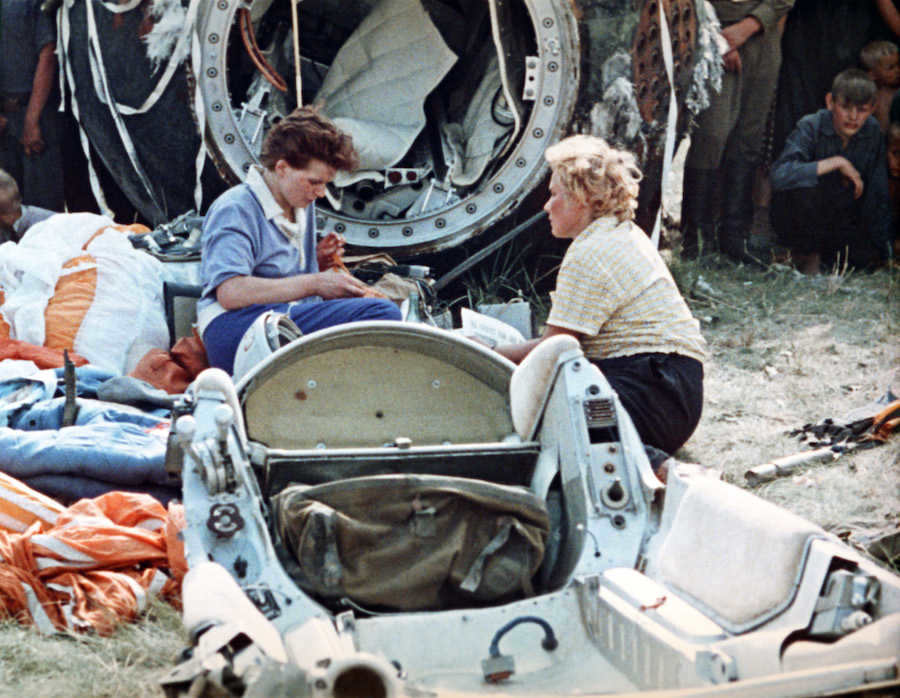

The Vostok-6 module encountered a malfunction and veered off its designated path, resulting in an incorrect landing spot. Valentina Tereshkova (shown on the left) was the first to be greeted by the residents of Murashkino village in the Altai Territory (Photo: TASS)
Prior to this, no American women had ever journeyed into space, and NASA had uncertainties regarding how a woman’s body would react in such an environment. For instance, doctors had genuine concerns about the possibility of menstrual blood flowing in an unconventional manner while in a weightless state – potentially traveling inward through the Fallopian tubes and into the abdominal cavity.
In 1983, influenced by scientific evidence and pressure from feminists, NASA sent Sally Kristen Ride into orbit. Since then, 55 American women have traveled to space, while only six Russian women have had the opportunity. This raises the question: why does Russia send so few women into space?
Are women interested in space exploration?
In 2021, the Cosmonaut Training Center (CTC) announced the names of four candidates who were accepted into the cosmonaut squadron. Surprisingly, all four candidates are men. These individuals were selected through an open competition that began in 2019, allowing anyone with a higher education and excellent health to participate.
The chief of Roscosmos, Dmitry Rogozin, then called on the girls to exhibit “greater active involvement”: “Rather than resorting to artificial quotas, we hope that the young women of Russia can successfully meet the rigorous requirements imposed on astronauts, thus restoring balance to a predominantly male squadron.”
However, the girls did not succeed. Out of 2.2 thousand applicants, only 64 reached the in-person selection stage, with nine of them being women. None of them were able to pass the physical tests as well as the men. Currently, the only woman in the cosmonaut team is Anna Kikina, who was selected through an open competition in 2012. However, the cosmonauts themselves attribute this to the entrenched perception of cosmonautics as a strictly male profession, rather than inadequate training.
“There has been an unspoken tradition since Soviet times that certain professions are reserved for men. One of these professions is being a cosmonaut,” said Elena Serova. Elena Serova, who went to space in 2015, stated this. – We do not have different requirements for women and men during the selection process. However, it is common for women to join the squadron but not meet certain requirements.”
In 2019, Russian cosmonaut Sergey Ryazansky caused a scandal with his statement: “Boys have primitive physiology, while we have a stable level of hormones. There is no intention to adapt rocket launches, spacewalks, or emergencies to a woman’s menstrual cycle.”
Interest in space is significantly greater in the United States and Europe compared to Russia. Last year, NASA received 12,000 applications from individuals aspiring to become astronauts, while in 2021, the European Space Agency (ESA) has already received 23,000 applications, with a quarter of them coming from women. Female applicants undergo the same rigorous testing as their male counterparts, without any preferential treatment, ensuring equal opportunities for all candidates.
A group of Russian male colleagues believe that the process of selecting American female astronauts is easier compared to our fellow countrywomen, as they supposedly have a different level of physical training. “Many women who go to space from the US come from the military. They are typically highly skilled, well-prepared pilots,” says Alexander Samokutyaev, the commander of Soyuz TMA-21 (2011) and Soyuz TMA-14M (2014-2015) spacecrafts. “I have had extensive interactions with them both on Earth and in space, and sometimes it can be difficult to distinguish them from their male counterparts – many of them even exhibit masculine traits. This is not the case with our female astronauts. They tend to be more delicate and oriented towards domestic responsibilities. We have a different perception of women and a distinct cultural background. Let’s not delve into discussions about emancipation at the moment; rather, let us hope for an increase in the number of women in the squadron.”
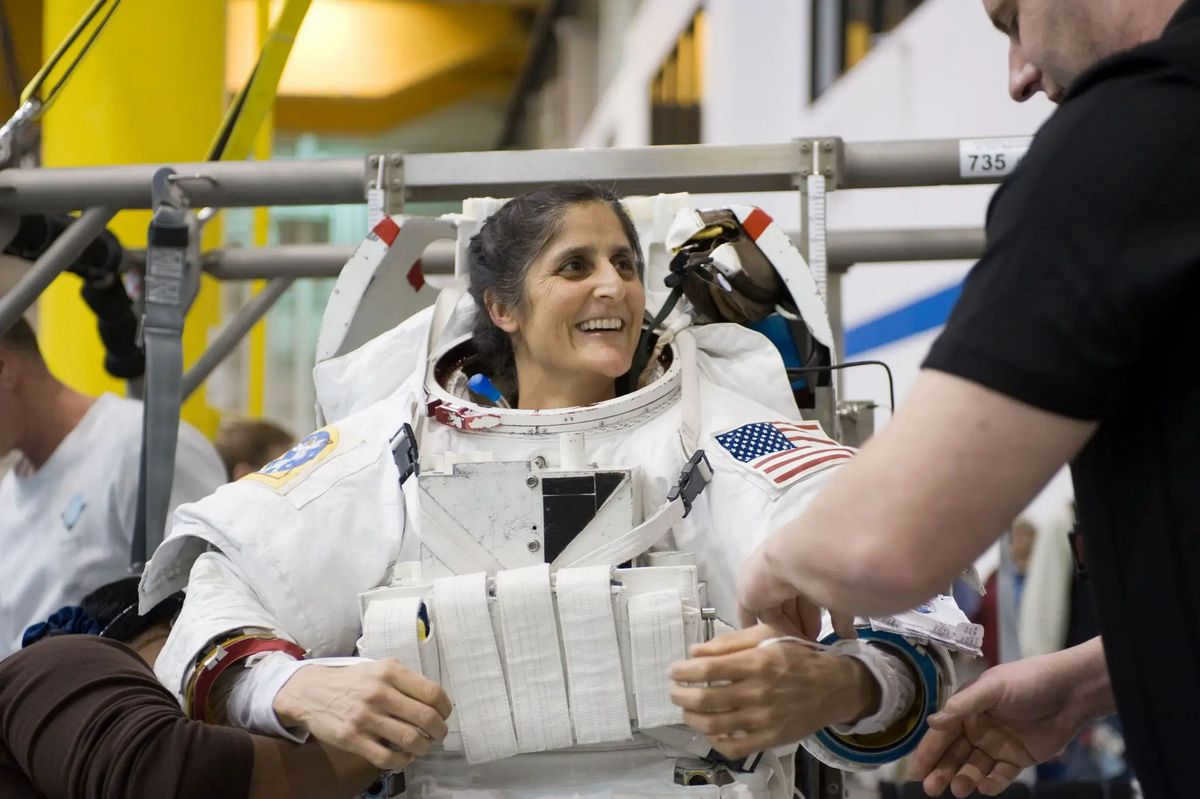
In the future, astronauts experience intense spinning in the centrifuge, reaching speeds of up to 70 revolutions per minute. Inside the thermo-chamber, they endure extreme heat as the air temperature rises to 60°C. In the barocamera, oxygen levels are so low that breathing becomes a challenge. The surdocamera offers complete silence, while the portholes reveal nothing but darkness. These conditions must be endured for a total of 72 hours, with 48 hours dedicated to work and no opportunity for sleep.
Additionally, astronauts face scuba diving, weightlessness, parachute jumps, and survival tests. While these activities may be torturous for the average person, they are a familiar reality for astronauts.
The Americans launch their shuttles for brief missions lasting up to two weeks. The training period spans two to three years. Conversely, Russian cosmonauts embark on extended space expeditions, lasting six months or even longer. Additionally, their preparation process spans seven to eight years. Perhaps this is one of the factors contributing to the lower number of individuals aspiring to become astronauts in our country compared to Europe and the United States.
NASA Initiates Production of Custom-Fit Spacesuits for Female Astronauts
With the much-anticipated spacewalk of Anne McClain and Christina Koch in the spring of 2019, history was expected to be made as it would mark the first time that two women embarked on this extraordinary journey. However, this significant milestone was unfortunately not achieved, as a major obstacle stood in their way – the unavailability of properly fitting spacesuits. Among the spacesuits aboard the International Space Station, only one size was suitable for women, leaving the rest too large. Consequently, Christina Koch was able to proceed with the spacewalk, while Anne McClain was replaced by male astronaut Nick Hague.
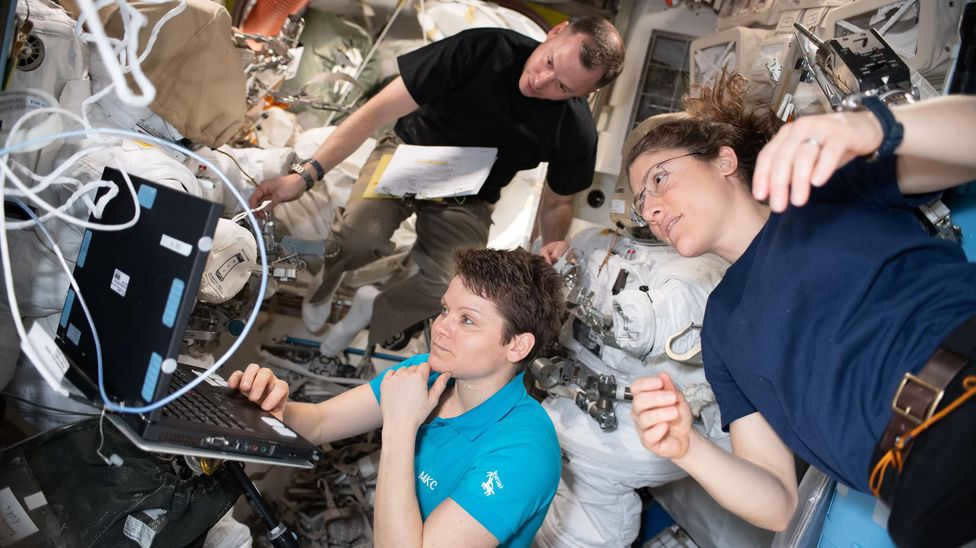

Anne McClain and Christine Koch were set to become the pioneers of outer space exploration as female astronauts (Photo: NASA)
And this is not a trivial inconvenience: in a bulky spacesuit, McClain could potentially make significant errors in the vacuum of space. “It is more challenging for women to embark on outer space missions primarily due to the ill-fitting spacesuits,” recalls Peggy Whitson, the record holder for the longest duration spent by a woman in space.
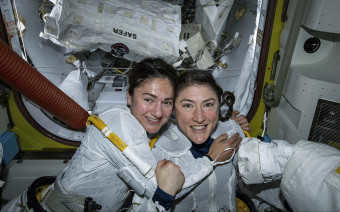
Regardless of the circumstances, NASA was faced with the reality that they did not have a suitable spacesuit for women when they needed it. The existing attire designed for male astronauts was of no use to female astronauts. However, NASA has addressed this issue with the creation of the new lunar spacesuit, Exploration Extravehicular Mobility Unit (xEMU). This innovative suit has taken all feedback into consideration and features a flexible design that can be adjusted to fit any astronaut, regardless of their height, size, shape, or gender.
Makeup is also worn by women on the International Space Station (ISS). Elena Serova, a Russian cosmonaut, revealed that she even had eyeliner because astronauts are considered as the representatives of their country and need to maintain a good appearance. Additionally, in 2023, the Japanese company Pola Orbis plans to launch a range of skincare products called CosmoSkin specifically designed for the harsh and dry environment of weightlessness. This new line of products is aimed at private space travelers who are scheduled to travel to the ISS later this year through Elon Musk’s SpaceX.
Are there any female astronauts without professional training who go to space?
Christa McAuliffe, an American math teacher, was set to become the first non-professional astronaut in space. She emerged as the winner among 11,000 colleagues and had plans to teach schoolchildren from outer space. Unfortunately, tragedy struck on January 28, 1986, when the Challenger spacecraft, carrying seven crew members, exploded just 73 seconds after takeoff. Christa McAuliffe was among those on board.
In 2006, Anousheh Ansari, an Iranian-American, embarked on a journey into orbit. She became the first female space tourist and was also a Muslim businesswoman. Initially, she was chosen as a backup for Japanese billionaire Daisuke Enomoto and was prepared to fly after him. However, due to unforeseen circumstances, Enomoto was diagnosed with heart problems and was not cleared by medical professionals to embark on the rocket. This created an opening for Anousheh Ansari, and she found herself soaring above the Earth.
During her time on the space station, she conducted various experiments related to radiation and weightlessness (it’s not just astronauts who get to work in space) and documented her experiences on her blog. The exact amount of money Ansari paid for her flight is undisclosed due to her contract, but we can estimate based on previous space travelers who paid $20 million for the opportunity to go to orbit.
On the other hand, Wally Funk had the privilege of flying for free. She was personally invited by Jeff Bezos, the wealthiest individual on Earth, to join his crew on the New Shepard spacecraft in July 2021. This historic journey lasted for 10 minutes and marked Wally Funk as the oldest person to ever venture into space at 82 years old. It was a lifelong dream for her, as she had been part of the Mercury-13 group in the 1960s, which aimed to train female astronauts. Although her dream didn’t come true back then, it finally became a reality half a century later.
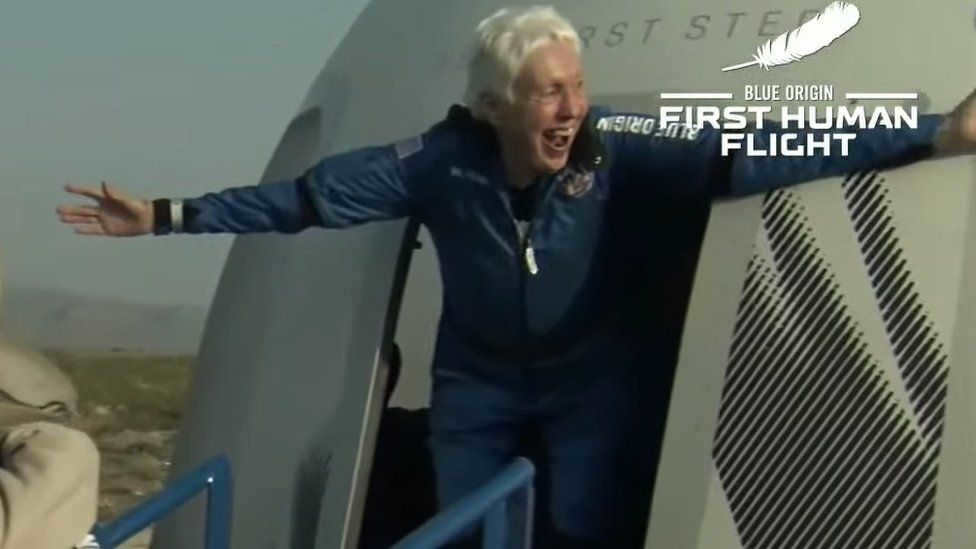
In 2010, Wally Funk purchased a $200,000 ticket to join Richard Branson’s Virgin Galactic program, but she only got the opportunity to fly into space in 2021, and with a different billionaire altogether (Photo: Blue Origin)
Russian actress Yulia Peresild had a much shorter wait. “Roscosmos” and “First Channel” had plans to film a feature movie on the ISS, and in the fall of 2020, they announced a casting call for the lead role. There were thousands of applicants. The casting required them to read Alexander Pushkin’s “Letter of Tatiana” and have excellent health. Peresild, who is 36 years old, demonstrated both. The crew’s flight with her took place in October 2021. Another non-professional cosmonaut, Klim Shipenko, who is the director of the future movie, also flew with her. He took on multiple roles during the flight: acting, filming, and doing makeup.
What does the future hold for women in space?
In a recent announcement from the Moscow Region Cosmonaut Training Center (CTC), it was revealed that Russian cosmonaut Anna Kikina has joined the crew of the 68th expedition. This is a significant milestone for women in space exploration. On October 5, 2022, Anna Kikina embarked on a historic journey as part of the crew of the SpaceX Crew-5 mission. She had the privilege of traveling to the International Space Station on an American private reusable spacecraft, utilizing the Falcon 9 heavy-lift launch vehicle. Anna Kikina made history by becoming the first Russian cosmonaut to fly on the Crew Dragon. Her space voyage lasted from October 5, 2022, to March 12, 2023.
Looking ahead, it is possible that the next groundbreaking achievement in women’s space exploration will come from Africa. A memorandum was signed between Russia and Tunisia in the summer of 2021, outlining the collaboration between the two countries to prepare the first Tunisian woman astronaut. This exciting partnership, facilitated by “Roscosmos,” opens up new opportunities for female representation in space missions.
The Americans have plans to expand their space exploration efforts even further. In August 2021, NASA made an announcement about their upcoming mission to Mars. However, this mission will be a simulated experience of life on Mars, as it will involve the construction of a ground module called Mars Dune Alpha, without any actual travel to the planet itself.
Nevertheless, a real journey to another planet is scheduled for 2024. As part of the Artemis program, NASA aims to send the first woman to the south pole of the Moon. In addition to walking on the lunar surface, she will also be part of an orbital platform-gateway where she and her male colleagues will establish a settlement. The list of candidates for this historic flight has already been announced, with a total of 18 individuals being considered. Notably, half of the team consists of women.
Russian astronauts’ second attempt at a spacewalk from the ISS ends in failure
Russian astronauts, Sergei Prokopyev and Dmitry Petelin, were unable to carry out their planned spacewalk for the second time due to technical issues with the Soyuz MS-22 spacecraft. The Russian space agency, Roscosmos, has attributed the failure to problems with the docking of the spacecraft to the International Space Station. During the NASA broadcast, fountains of technical fluid were observed spraying from the ship. More details about the malfunctions on the ISS can be found in the article “Gazeta.Ru”.
“Due to technical issues”
On the morning of December 15, it was announced during negotiations between the ISS crew and ground services that the scheduled spacewalk of Sergei Prokopyev and Dmitry Petelin, set to take place at 5:20 Moscow time, would be delayed. This delay is a result of a depressurization problem in the cooling system of the “Soyuz MS-22” spacecraft, which is currently docked to the station.
The NASA broadcast revealed the presence of technical fluid spouting from the ship. The astronauts were able to capture images of the problematic “Soyuz MS-22” through the windows of the ISS and examine it using the robotic manipulator ERA. These images are currently being analyzed by specialists on Earth.
The director of the NASA broadcast assured that “neither the two Russian cosmonauts nor the rest of the ISS crew members are in any danger.”
Roscosmos has announced the cancellation of the exit of the Russian cosmonauts due to “technical reasons”.
“The VKD-56 program was interrupted due to technical reasons. Prior to opening the exit hatch, the crew received information about an alarm from one of the diagnostic systems of the Soyuz MS-22 spacecraft,” states the message published on the state corporation’s Telegram channel.
According to the website of Roscosmos, it has been reported that the outer skin of the instrument and unit compartment of the Soyuz MS-22 spacecraft has been damaged.
Roscosmos stated that Russian cosmonaut Anna Kikina utilized a camera on the Nauka laboratory module to capture images and videos of the outer surface of the compromised spacecraft. These visual materials were subsequently transmitted back to Earth.
The state corporation emphasized that currently, all systems on the ISS and the spacecraft are functioning as expected, and the crew is safe.
Replacement of Spacecraft
An insider revealed to RIA Novosti that the launch of the upcoming manned spacecraft Soyuz MS-23, originally scheduled for March 16, 2023, may have to be delayed due to the accident involving Soyuz MS-22.
“Roscosmos experts are currently exploring the option of rescheduling the launch of Soyuz MS-23 as a result of the Soyuz MS-22 incident,” the insider stated.
Another source from the agency expressed concerns over the severity of the thermal regulation system accident on Soyuz MS-22, which could potentially impact the ship’s instruments. Specifically, the correct maintenance of temperature and humidity levels might be compromised. If this occurs, the spacecraft could overheat on the sunlit side and freeze in the Earth’s shadow during its orbital rotation as part of the International Space Station (ISS).
He states that the specialists at Roscosmos are now considering priority measures to ensure that the devices on the spacecraft maintain an acceptable thermal mode of operation.
Prior incident
This recent cancellation of the spacewalk marks the second time it has happened during Sergei Prokopyev and Dmitry Petelin’s mission.
A total of five spacewalks were scheduled for their expedition. The first one took place on November 17 and everything went smoothly. The Russian cosmonauts prepared for the transfer of the radiator and also installed a system for securing large objects on the “Nauka” module.
The second spacewalk was originally scheduled for November 25th. Petelin and Prokopyev were supposed to move the heat exchanger radiator from the Rassvet module to the new Nauka module of the Russian segment of the ISS. However, it was postponed to December 15th due to an abnormal operation of the cooling system pumps in one of the spacesuits, just half an hour before liftoff.
On the day before, the Roscosmos Telegram channel announced that the cosmonauts would venture outside the ISS to upgrade the Nauka module. Their task was to prepare the radiator for transfer using the ERA manipulator from the Dawn module and install it on the Nauka module.
“The exit hatch of the Search module will open at 5:20 Moscow time. Make sure to set your alarm clocks. The planned duration of the spacewalk is 6 hours and 37 minutes,” warned the state corporation.
Roscosmos explained that these conditions, which are caused by the Sun’s unique position in relation to the orbital plane of the ISS, can only occur during the winter solstice.

Stay updated with the latest news from “Gazeta.Ru” on News, Zen, and Telegram.
If you encounter any errors, simply select the text and press Ctrl+Enter
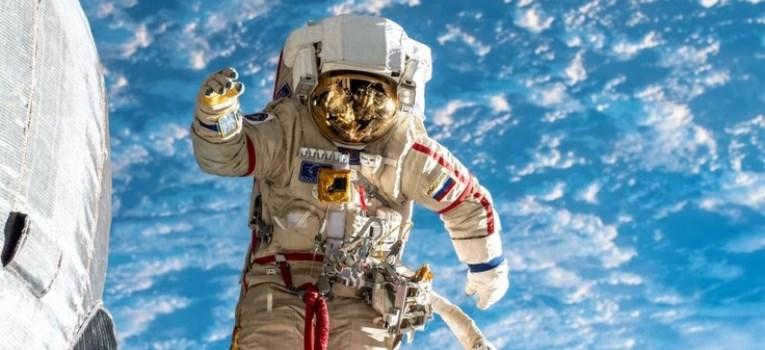

Written by Marina Demidova, an economist and mathematician with 30 years of experience in government statistics. Date: March 21, 2020. Estimated reading time: 7 minutes.
In the course of exploring the vastness of space, a total of 565 cosmonauts from 38 different countries have ventured into Earth’s orbit. Among them are 122 cosmonauts from the former Soviet Union and Russia, as well as 348 American astronauts.
When the topic of space travel is brought up, the name that immediately comes to mind is Yuri Gagarin. He was the pioneer who embarked on the first-ever spaceflight. However, at the time of his selection, there were 20 other individuals in the cosmonaut squad who could have taken his place. Fast forward almost 60 years, and over 560 people from 38 different countries have had the opportunity to venture into space. Russia alone boasts a total of 122 cosmonauts, with 72 of them being part of the original squad from the USSR era.
As per the Gagarin Cosmonaut Center, at present there are 24 cosmonauts actively serving: 23 males and one female.
"Although I’m not bored in the cosmonaut squadron, it would be more appropriate if there were more women since I am the only one. There are plenty of women and men on Earth, but for some reason, there is only one woman in the squadron. I have hope and belief that in the upcoming recruitment, women will finally be included, it should have happened by now,"
Anna Kikina, the sole female in the Russian cosmonaut squadron
Only half of them have been on space missions. Out of all, O.D. Kononenko is the only one who has completed 4 flights so far.
In the history of space exploration, 122 individuals from our country have ventured into space. Among them are 4 women. Unfortunately, 40 space conquerors are no longer with us.
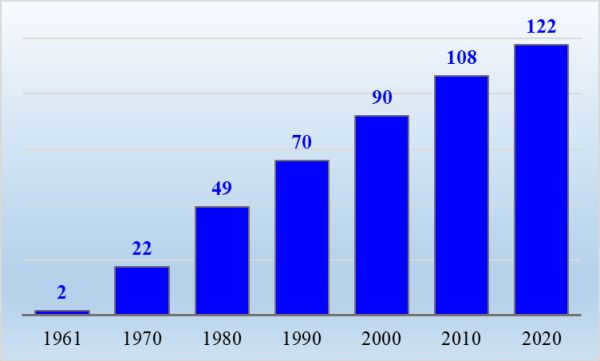
Graph 1. The number of cosmonauts at the end of each year has been changing. The data for this graph was obtained from ru.wikipedia.org.
We not only became the first explorers of the Universe, but also left our mark in history:
- G. Titov’s 24-hour long flight;
- A. Leonov’s spacewalk;
- V. Tereshkova, the first female cosmonaut.
We can take pride in this legacy of the Soviet era.
One of the notable achievements of Russian cosmonauts is the number of space flights they have completed. Only two cosmonauts, S. Krikalyov and Yu. Malenchenko, have managed to be in orbit 6 times. Additionally, these two and G. Padalka have spent over 800 days in space (803, 827, and 878 days, respectively).
A.A. Solovyov holds the record for the highest number of spacewalks, with a total of 16, and the longest cumulative time spent outside the spacecraft, which amounts to 82 hours and 22 minutes.
The initial team
The first team was relatively small, officially known as “Air Force Group No. 1”. It consisted of only 20 young and fit individuals.
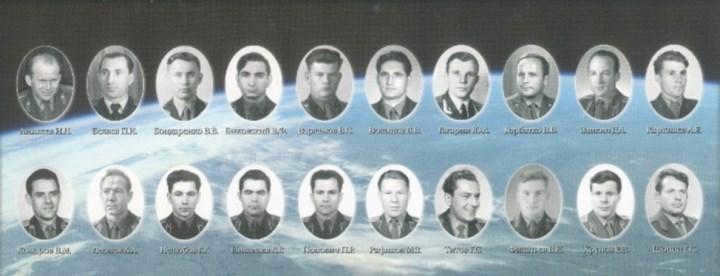
Image: The initial team of astronauts from the Soviet Union. Source: CPC website
Entrance into the group was a complex process. Initially, medical professionals searched for suitable candidates among young officers from military units. Out of the 3,456 individuals, only 29 pilots remained after three rounds of selection.
In March 1960, 20 men were accepted into the team:
The youngest member, V. Bondarenko, was 23 years old, while the oldest, P. Belyaev, was 35 years old. The other 9 were placed in the “reserve”.
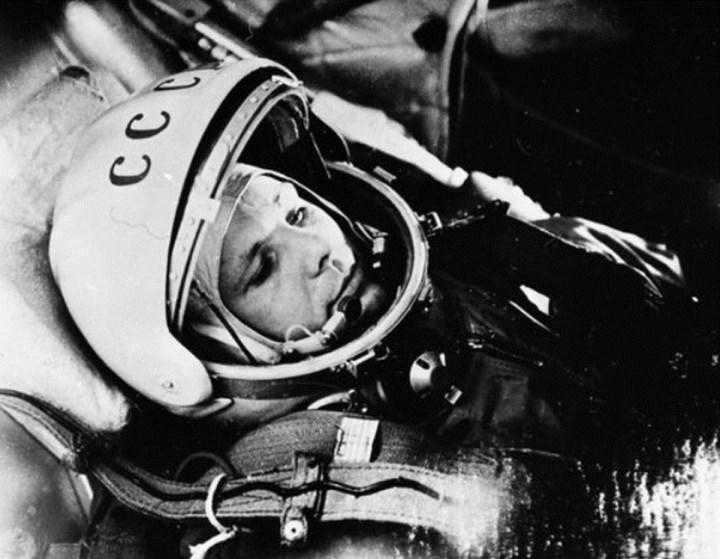
In the summer of 1960, a group of six astronauts was separated from the team. The group consisted of:
- Valery Bykovsky;
- Yuri Gagarin;
- Grigory Nelyubov;
- Andriyan Nikolaev;
- Pavel Popovich;
- German Titov.
In March 1962, five women joined the men’s team. The first three were Irina Solovyova, Tatiana Kuznetsova, and Valentina Tereshkova – all of them were actively involved in parachuting. And then two more joined: Valentina Ponomaryova and Zhanna Yorkina.
As luck would have it, only one of them got to fly.
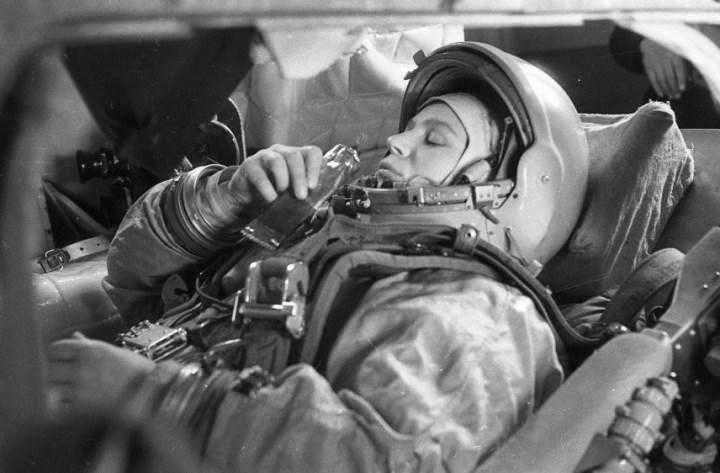
It is currently impossible to find an expert who can recite the names of all 122 cosmonauts from memory. However, the names of those very first cosmonauts could be recalled by any Soviet schoolchild. The bravery of these officers will be remembered for centuries, as they ushered in the space age on our planet.
Of the original group, only one cosmonaut, B. Volynov, is still alive. He reached the age limit in 1990 and as a result, left the squadron. Volynov, a pilot-cosmonaut and twice Hero of the USSR, holds honorary citizenship in the following cities: Kaluga, Prokopyevsk, Kustanai, Magadan, Irkutsk, Bulgarian Sofia, and Polish Kalysh.
In the history of space exploration, there have been hundreds of space flights, each with its own set of heroes who have conquered the vastness of the stars.
As per the CPC, the 61st mission to the International Space Station is ongoing.
As stated by the CPC, in October 2019, the Soyuz MS-12 spacecraft successfully landed, and on February 6, 2020, the Soyuz MS-13 spacecraft also completed its mission. The first mission saw A. Ovchinin (RF), Nick Hague (USA), and Hazza Al Mansouri (UAE) returning home, while the second mission involved A. Skvortsov (RF), Luca Parmitano, and Christina Cook (USA).
The crew of Expedition 62, consisting of O. Skripochka, Andrew Morgan, and Jessica Meir, remains on the space station. They are expected to return to Earth on April 17, 2020, aboard the Soyuz MS-15 spacecraft.
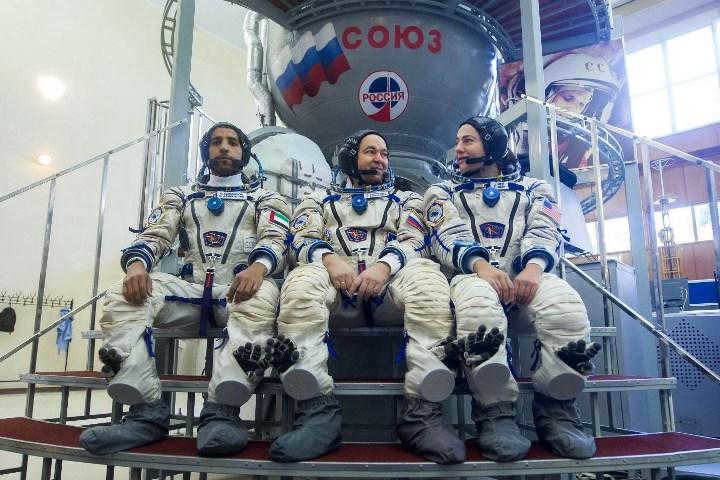
The launch of the Soyuz MS-16 manned spacecraft to the International Space Station (ISS) is scheduled for April 9, 2020. The spacecraft will carry the members of the ISS-63 expedition, namely A. Ivanishin, I. Wagner, and Chris Cassidy. The Baikonur Cosmodrome will serve as the launch site for this mission.
Note: The ongoing selection process for the current group of cosmonauts will continue until June 1, 2020. This selection process began on June 3, 2019, and is open to resilient, strong, educated, and determined Russians under the age of 36. Roscosmos and the Central Space Center are accepting applications for this opportunity.
Talking about the state of affairs in Russian cosmonautics on the Internet can be more difficult than a Soyuz attempting to fly through the eye of a needle. The reason for this is quite simple – many individuals are drawn to black-and-white thinking, resulting in clashes between extreme viewpoints during discussions. Some individuals believe that NASA will cease to exist without Russian engines and seats on manned spacecraft, while others are convinced that Roscosmos has long abandoned its space program. The truth, however, lies somewhere in the middle, yet these discussions often devolve into arguments rather than a genuine search for the truth. Recognizing these potential pitfalls, let us attempt to discuss the state of Russian cosmonautics in a concise manner.
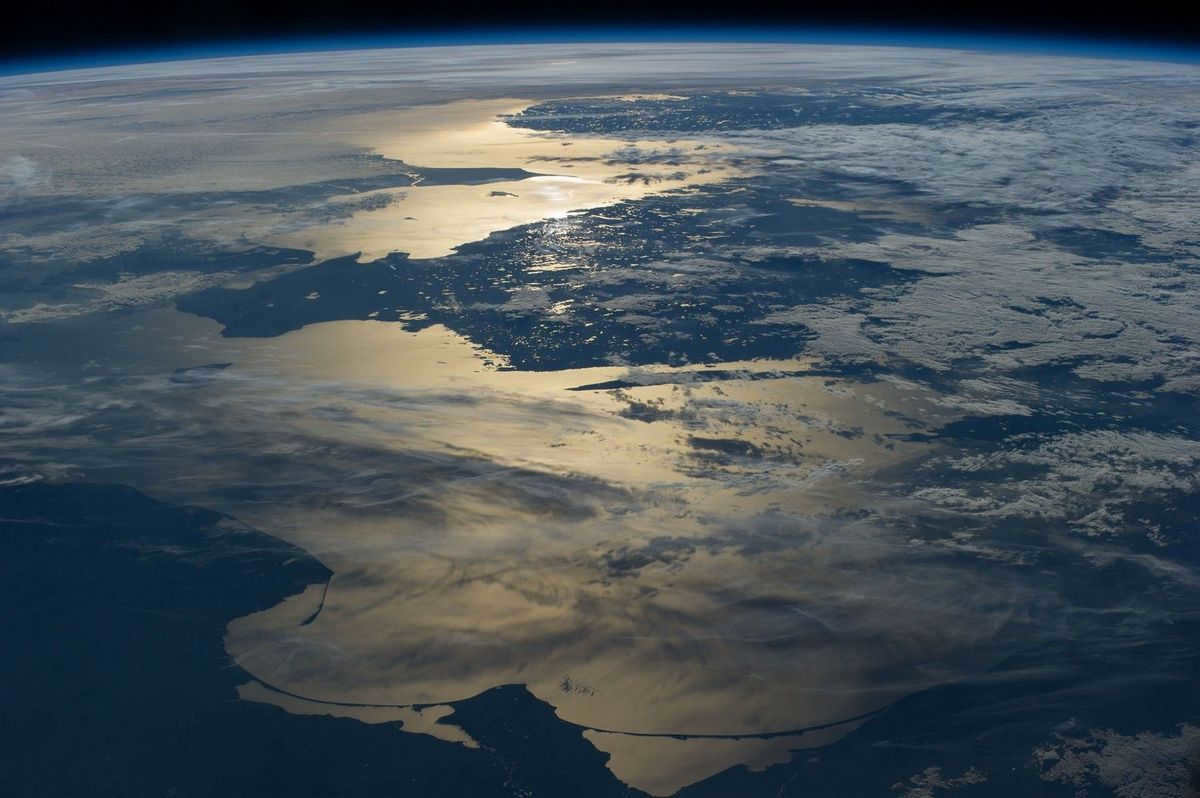
Launch Count
Russia has been the frontrunner in the number of space launches for thirteen consecutive years. However, in 2016, both the United States and China surpassed us in this aspect. In 2017, there is a possibility that SpaceX, a private company, might also surpass Russia in the number of launches. Our dominance in this area used to be a source of pride, and its loss has been a cause for concern. Is this loss justified?
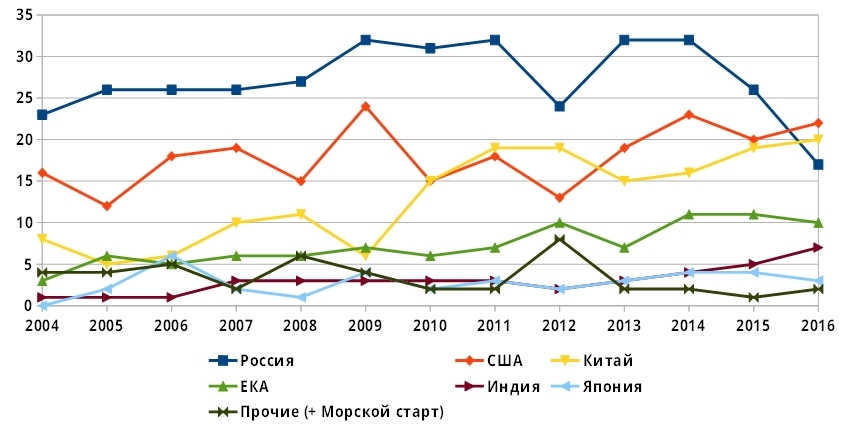
There are multiple factors that have contributed to the significant increase in Russian space launches in recent times. Primarily, there has been a deployment of various satellite constellations such as GLONASS for navigation, Express and Yamal for communication purposes, Resurs for Earth remote sensing, and military satellites. Additionally, there has been a notable increase in the launch of foreign spacecraft through commercial agreements.
During the 1990s, the introduction of Russian launch vehicles to the global market proved to be both affordable and highly sought after.
ILS, a dedicated company, offered competitive prices for Proton rockets, resulting in 98 successful launches to the widely requested geostationary orbit since 1996. Additionally, the manned program successfully launches 4 Soyuz spacecraft with cosmonauts and 4-5 cargo Progresses each year, totaling a minimum of 8 launches annually.
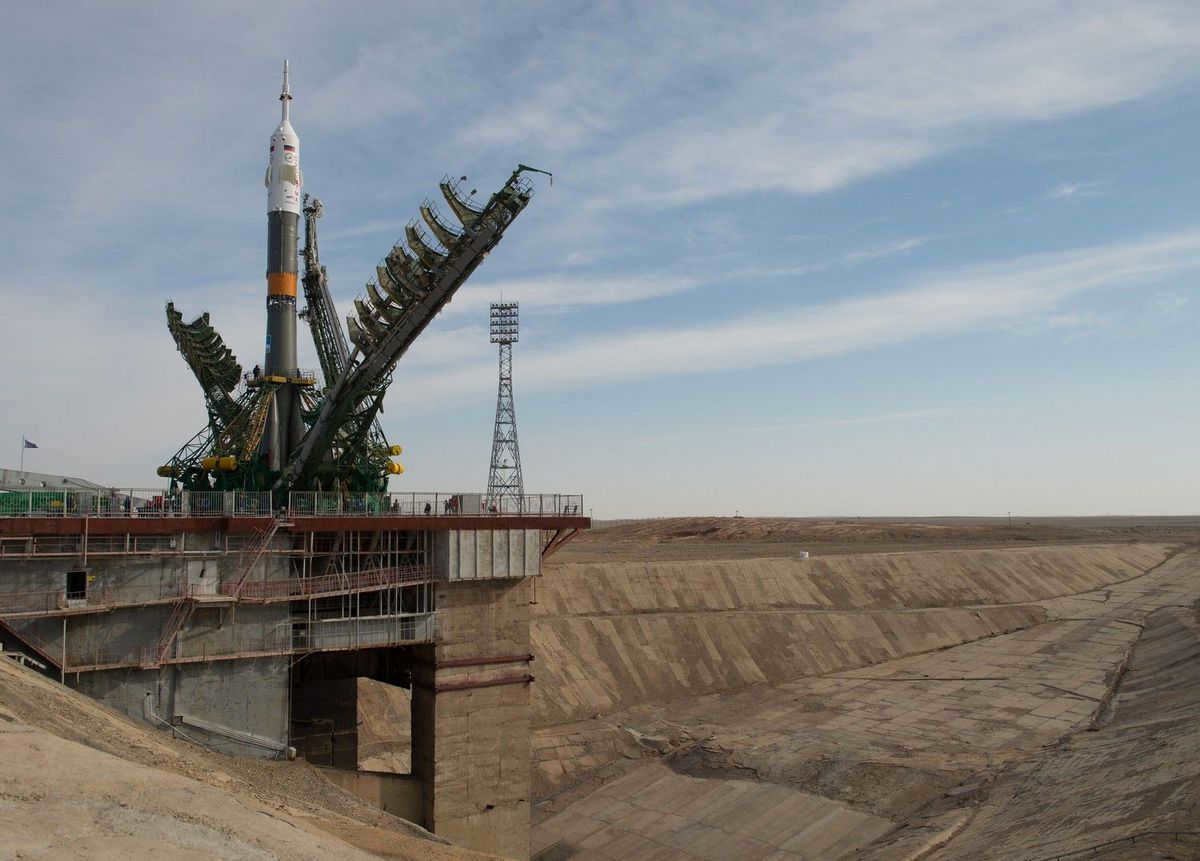
Ironically, the decrease in launches is actually a result of a positive factor. During the 1980s, the Soviet Union carried out approximately one hundred launches annually. However, their Strela communication satellites had a limited lifespan of only six months in orbit, while their Zenit reconnaissance satellites could only function for a mere two weeks.
With the increasing longevity of satellites in orbit, the frequency of launches can be minimized, which counteracts the negative impact of a high number of satellite launches.
There is also a concurrent process of replacing launch vehicles. The previous Cosmos and Cyclone models are no longer operational, and the conversion Dnepras are also gradually reaching the end of their service lives. While the new and lighter Soyuz-2.1v, which made its inaugural flight in late 2013, has successfully completed its third launch in June 2017, the progress of Angara has been less impressive. Despite two test launches in 2014, it has yet to begin deploying actual satellites. This delay is not solely attributable to the expected adjustments following the initial, albeit successful, launches. The Khrunichev Center, where Angara is manufactured, is relocating its rocket production to Omsk and downsizing its operations in Moscow by 80%. Given these circumstances, the delay in mass production is unfortunately understandable.
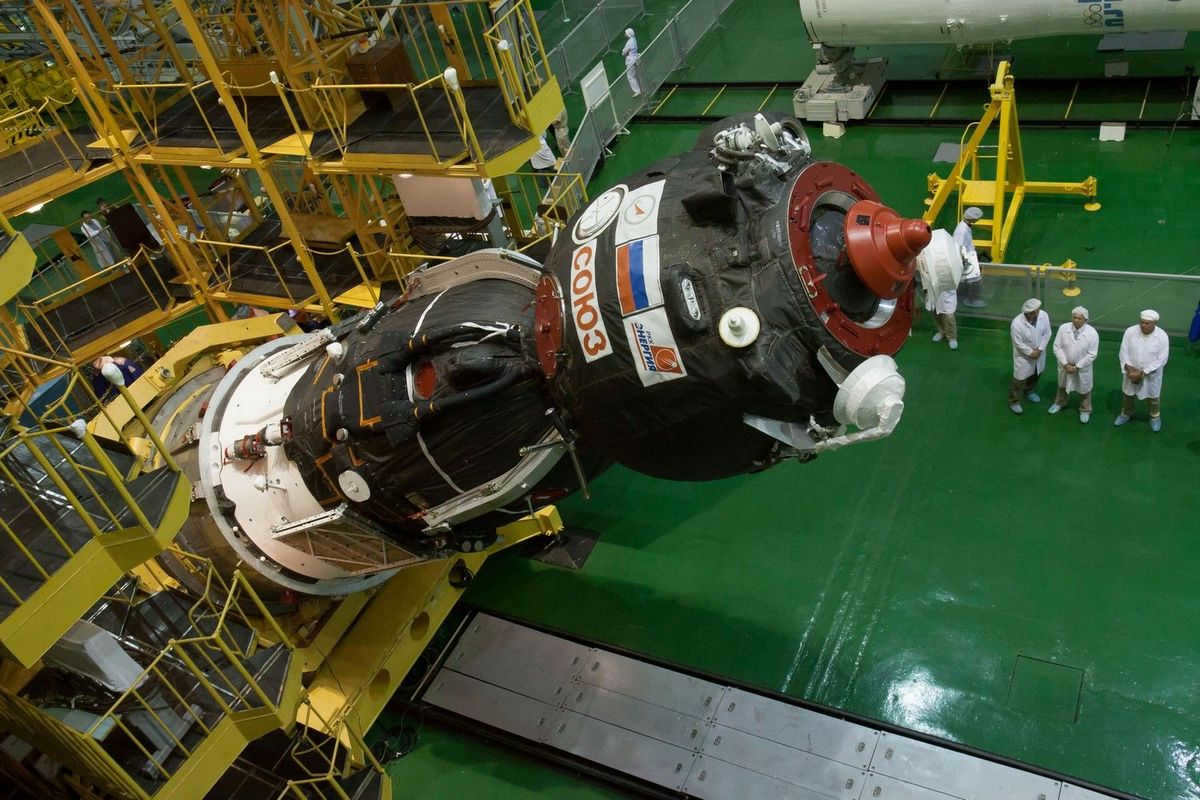
Occurrences
There is a widespread perception that our rockets are frequently crashing. However, the data does not support this notion. When we examine the relative incident rate (the number of occurrences divided by the number of rockets), we can observe that the performance of Russian space exploration is on par with that of other nations.
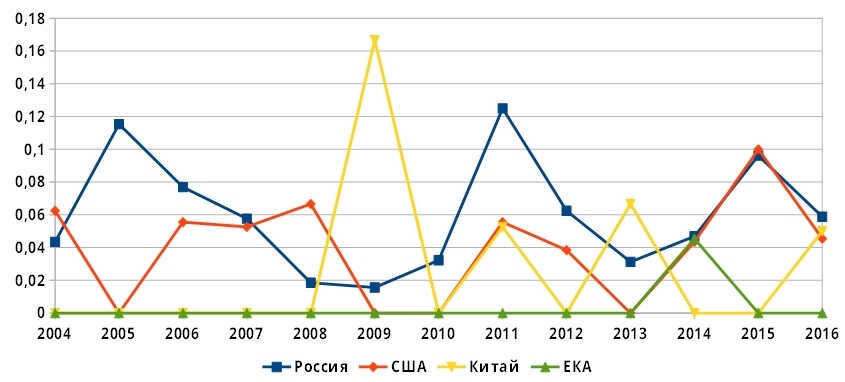
In addition to the European Space Agency, which has a nearly flawless safety record (with the exception of a single incident in 2014 involving a malfunctioning Russian Fregat unit that resulted in satellites being placed in an unintended orbit, but still functioning properly), Russia, the United States, and China display a similar frequency of accidents.
What keeps the misconception about our rockets constantly crashing so enduring?
There are several factors contributing to the persistence of this myth. Firstly, the media tends to give minimal coverage to successful rocket launches, while accidents receive much more attention. This skewed coverage creates the false impression that our rockets are constantly failing. Secondly, space exploration is closely tied to national pride and prestige, so there are individuals and groups who actively seek out and amplify news of accidents to support the narrative that “things are going wrong in our country”. This phenomenon is further fueled by a recurring list of memes that are constantly circulated. Personally, I have been exposed to these memes multiple times. Thirdly, human psychology tends to favor simplistic black-and-white thinking, making it difficult for people to engage in rational analysis. Lastly, despite the commendable PR efforts of Roscosmos, there is room for improvement in their communication strategies.
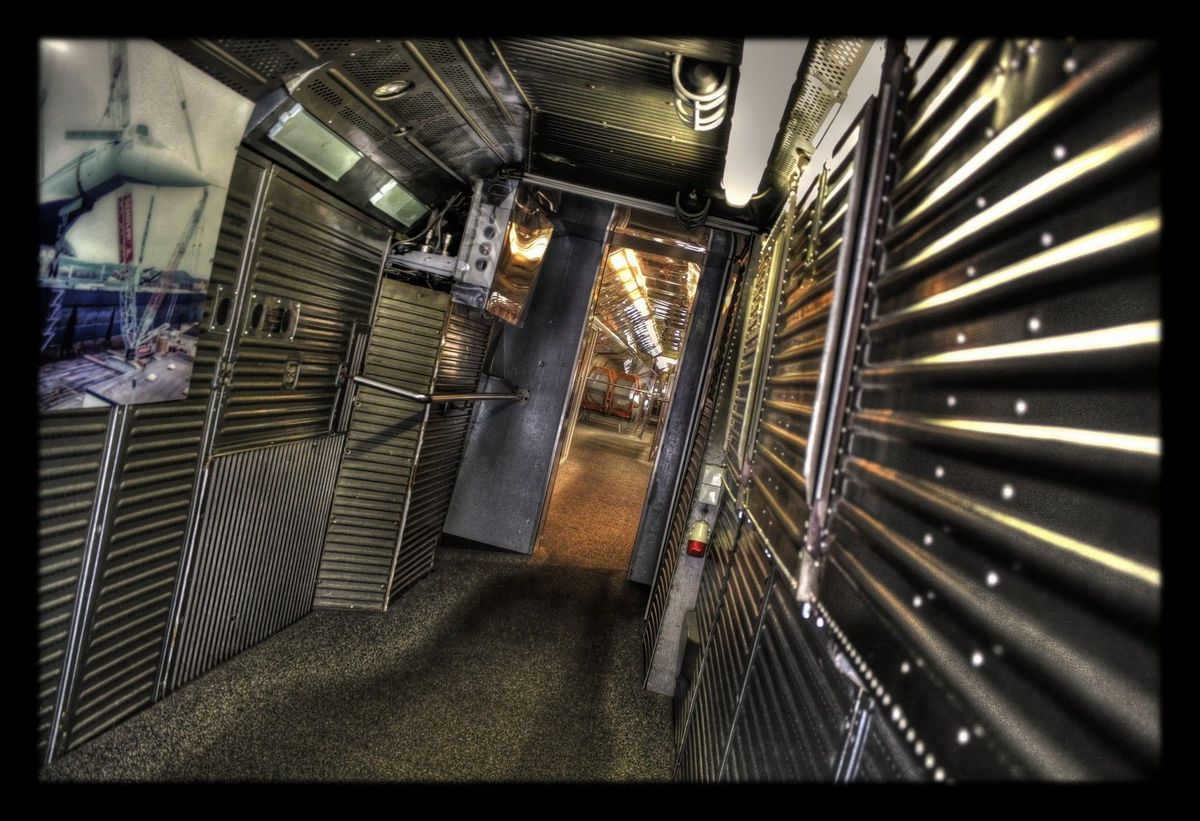
Public Relations
There is an opinion that Roscosmos is performing well, but lacks effective public relations. However, this statement is not entirely accurate – Roscosmos’ public relations activities are quite prominent. The agency actively maintains its presence on social media platforms. Astronauts participate in broadcasts, manage their own pages, and share popular photos from space on Instagram, for example. In 2016, significant effort was dedicated to the slogan “Look up!”
Roscosmos TV deserves high praise. Their production of two weekly YouTube programs (formerly one aired on Russia 24) and their creation of excellent movies showcase their expertise. Through their content, we are provided with detailed insights into the training of cosmonauts.
In addition to these accomplishments, Roscosmos TV has also developed an impressive video encyclopedia titled Cosmonauts. Furthermore, they have successfully produced delightful astronomy videos that explore various hypothetical scenarios.
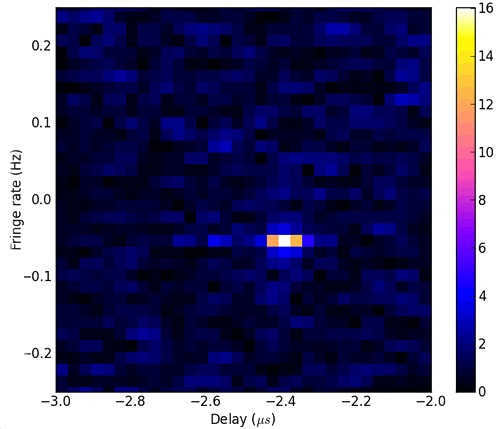
The positive and negative aspects
Every nation’s aerospace sector possesses both strong and weak points – some have made significant advancements in certain areas, while others have advantages in different aspects, and all face their own challenges.
Advantages:
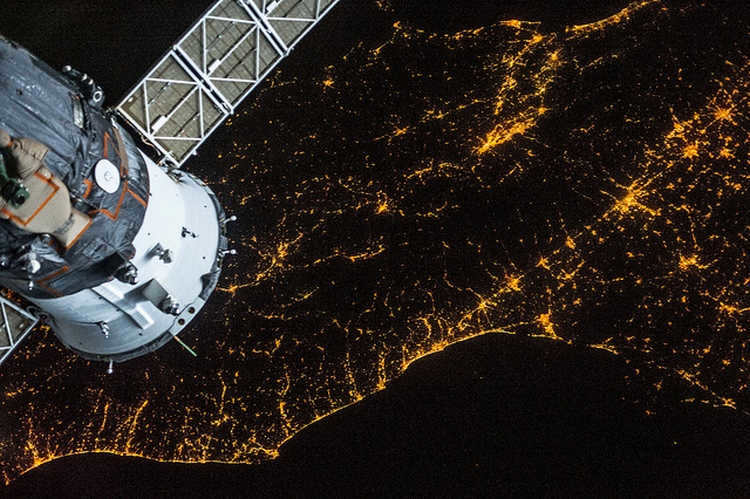
- Russia’s cosmonautics program has a well-developed applied aspect. The country boasts one of the two global navigation systems, along with geostationary and low-orbit communication systems, meteorological and remote sensing satellites, and military satellite constellations. When it comes to the number of operational satellites, Russia ranks third globally, following the United States and China.
- Manned space exploration is undeniably one of Russia’s strengths. The Soyuz spacecraft is renowned for its reliability and efficiency, and even with the emergence of American manned spacecraft, it still stands out. While it may not offer the same level of comfort, it continues to operate flawlessly until the arrival of the new Federation spacecraft. Russia has gained a wealth of knowledge and technological advancements through its orbital stations and long-term human presence in space.
- We maintain our dominance in specific domains. For instance, we possess the finest oxygen-kerosene engines for rockets and exceptional electrojet (ion, plasma) engines for satellites. The Proton and Soyuz launch vehicles boast extensive operational records and are consistently upgraded.
- We are currently developing potential revolutionary technologies, including a nuclear tug, detonation engines, hypersonic technologies (initially for military purposes but could potentially be adapted for space exploration), and methane engines.
Weaknesses:
- One weakness is the lack of science vehicles beyond Earth’s orbit. While this may not directly generate profit, it does provide valuable scientific data and serves as a PR opportunity. To address this, collaboration with other space agencies allows for our instruments to be used on their vehicles. For example, neutron detectors are deployed on the Moon and Mars orbits, as well as on the Curiosity rover. Additionally, we are involved in joint projects such as the Exomars project with the European Space Agency.
- Another weakness lies in the failures experienced in certain technological areas. Although we possess the knowledge to produce hydrogen-oxygen engines, there is a delay in their transition from laboratories to production rockets. These engines have the potential for high profitability in upper stages. Furthermore, there are challenges related to the element base for spacecraft.
- There is uncertainty regarding the future space development plan for the next few years. The sudden announcement that there won’t be a manned Angara at Vostochny and that cosmonauts will be transported from Baikonur using the Soyuz-5 rocket (also known as Phoenix/Sunkar), which is still in the design phase, suggests that we can expect further unexpected changes.
Unfortunately, Russia’s space industry is not at the forefront compared to other countries in certain areas. However, it would be a mistake to dismiss it entirely as significant progress is being made. In the upcoming years, Russia will continue to be among the leading space nations (USA, Russia, China) and space agencies (European Space Agency, 22 countries) albeit with a slower pace of advancement.
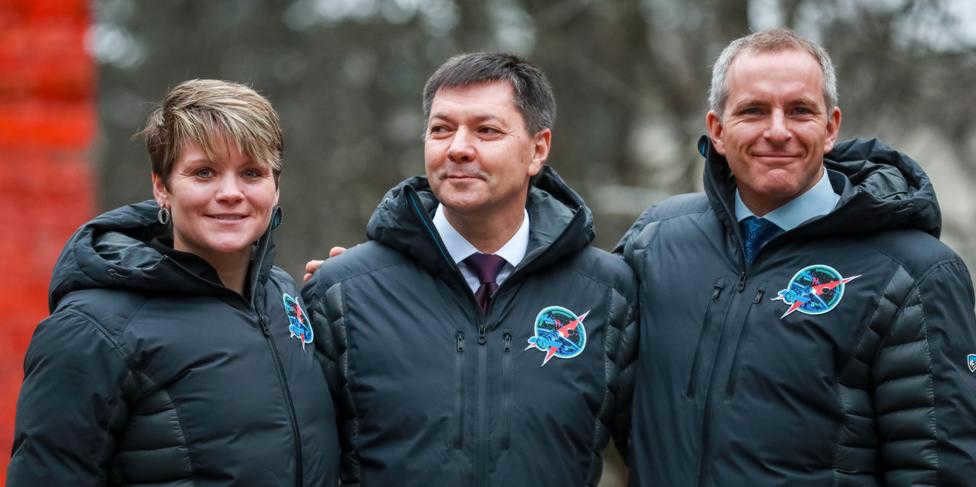
The state commission at the Baikonur Cosmodrome on December 2 gave its approval for the crew of the upcoming expedition (ISS-58/59). In November, both the main and backup crews completed their training and successfully passed all exams at the Yuri Gagarin Cosmonaut Training Center (CTC).
On November 19, the Commission on manned flights, led by Dmitry Rogozin, the head of Roscosmos, approved the launch of the Soyuz MS-11 manned spacecraft on December 3 from Baikonur Cosmodrome. The new crew will follow a “short” flight pattern, which means they will reach the station in just six hours.
The main crew of Soyuz consists of the following members: Oleg Kononenko from Roscosmos, Anne McClain from NASA, and David St. Jacques from the Canadian Space Agency. The backup crew includes Alexander Skvortsov from Roscosmos, Andrew Morgan from NASA, and Luca Parmitano from the European Space Agency. The duration of the flight is planned to be 194 days. To indicate weightlessness during the Soyuz launch, the crew will use three plush toys, including a dragon and an elf.
During the press conference held at Baikonur Cosmodrome, Oleg Kononenko expressed complete assurance in the dependability of both the Soyuz-FG rocket and the Soyuz MS-11 spacecraft, as the new expedition’s launch approached. The cosmonauts have been diligently preparing for any potential emergency scenarios and are fully aware that they may encounter them in actuality.
Delay caused by an unexpected incident
The scheduled launch of this expedition was initially set for the end of this year. However, due to an unfortunate accident involving the Soyuz-FG rocket, it has been pushed back to December 3. On October 11, shortly after liftoff from the Baikonur Cosmodrome, the Soyuz-FG carrier carrying the Soyuz MS-10 manned spacecraft experienced a catastrophic crash. The investigation committee determined that the accident was the result of the side block of the first stage colliding with the second stage during the separation process. This collision prevented the activation of the system designed to propel the block away from the rocket, as one of the corresponding sensors had been inadvertently bent during assembly at Baikonur.
Simultaneously, Kononenko, McClain, and St. Jacques served as backups for the crew that embarked on the ISS mission in June and is currently aboard the station (consisting of cosmonaut Sergey Prokopyev from Roscosmos, NASA astronaut Serena Aunion, and European Space Agency astronaut Alexander Gerst). Moreover, during the October 11 launch, Kononenko and St. Jacques acted as substitutes for Ovchinin and Hague.
The most experienced member of the primary crew is Kononenko, who will be going to the ISS for the fourth time, while McClain and St. Jacques have yet to gain any experience in space travel. Among the backups, Skvortsov holds the most experience with two previous flights. Parmitano has been on the station once, while Morgan has not yet had the opportunity. It is worth mentioning that as the commander of the Roscosmos cosmonaut team, Kononenko’s duties in the CPC will be assigned to another individual during his stay on the ISS.
Discover more details about the fresh ISS-58/59 team
Oleg Kononenko takes charge of the Soyuz MS-11 spacecraft. He serves as the leader of Roscosmos’ cosmonaut squad, being the 473rd cosmonaut globally and the 102nd cosmonaut of the Russian Federation.He is a renowned Hero of Russia, honored with the Order of Merit to the Fatherland, III and IV degrees, in addition to the Medal for Merit in Space Exploration.
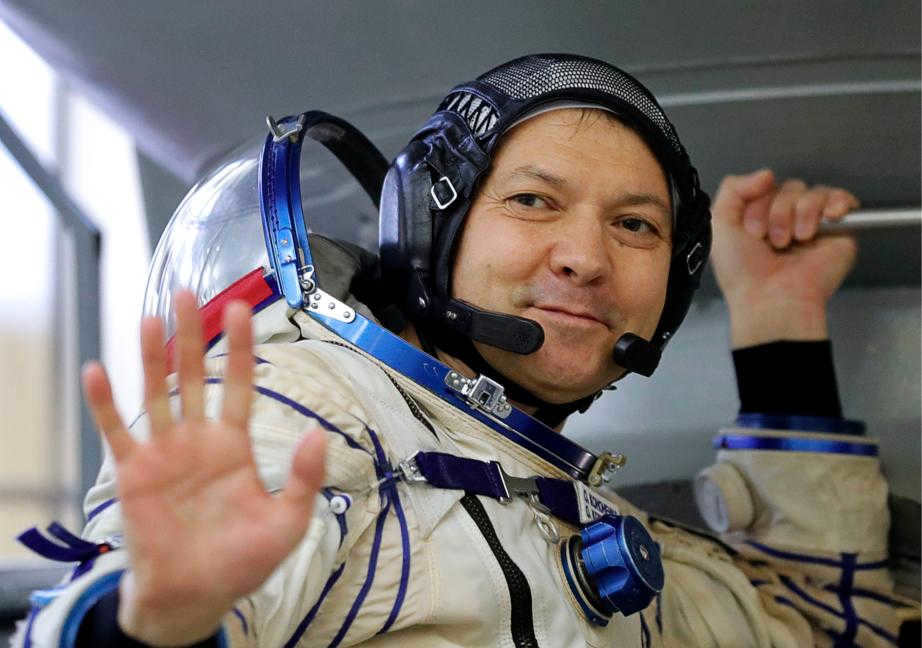
Kononenko was born on June 21, 1964 in Chardzhou, Turkmenistan. In 1988, he completed his studies at the Kharkov Aviation Institute, specializing in Aircraft Engines and earning the qualification of mechanical engineer.
Following his graduation, he joined the Central Specialized Design Bureau of the State Research and Production Rocket and Space Center, which is now known as RSC “Progress” and is responsible for manufacturing Soyuz launch vehicles. During his time there, he advanced from an engineer to a leading design engineer, contributing to the design of electrical systems for spacecraft.
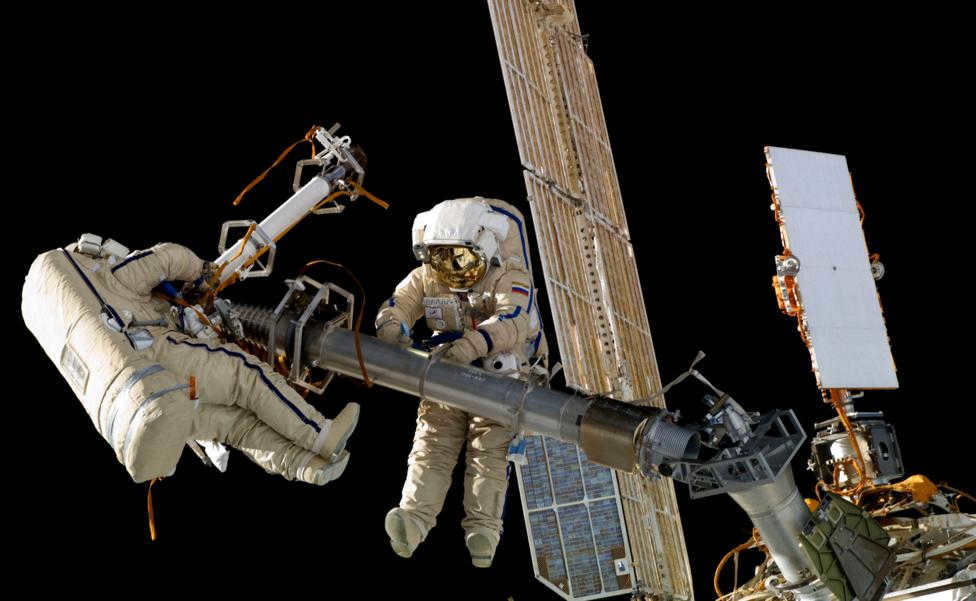
In 1996, he embarked on his journey as an astronaut and eventually secured a spot in the primary crew for the upcoming expedition to the ISS. His inaugural space mission was conducted from April 8 to October 24, 2008. Throughout this mission, he successfully completed two extravehicular activities with a combined duration of 12 hours and 16 minutes. For his second journey to the space station, Kononenko departed on December 21, 2011, and returned on July 1, 2012. During this mission, he conducted a spacewalk that lasted 6 hours and 15 minutes. His third and most recent spaceflight took place from July 23 to December 1, 2015.
David Saint-Jacques, a flight engineer aboard the Soyuz MS-11 spacecraft, is an astronaut representing the Canadian Space Agency.
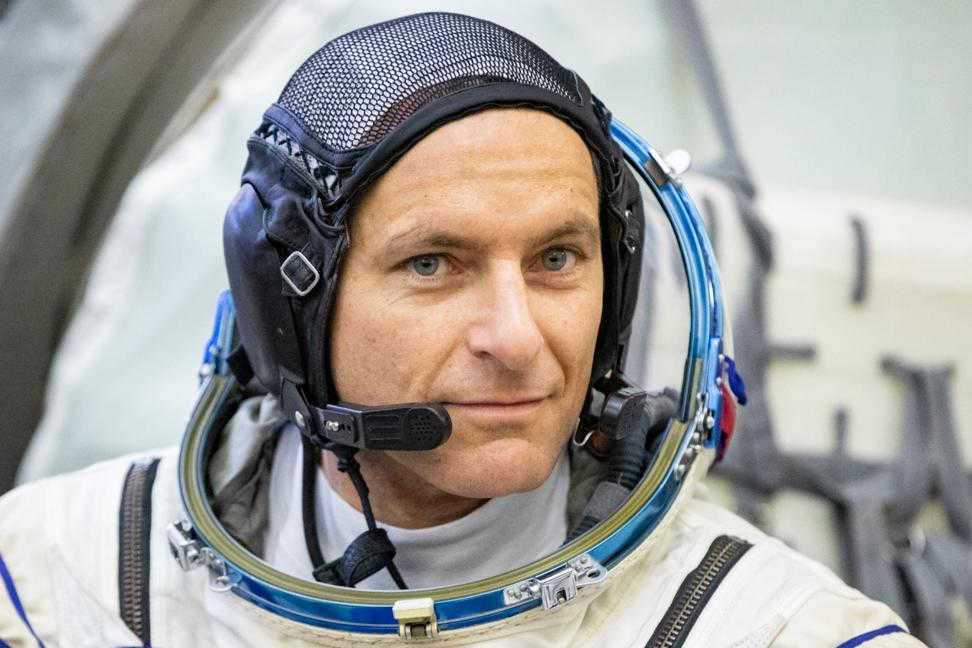
Saint-Jacques was born in Quebec City, Canada on January 6, 1970. He earned a Bachelor of Engineering degree in physics from the Polytechnic Institute of Montreal in 1993. Five years later, he pursued a PhD in astrophysics at the University of Cambridge in the UK. In 2005, he obtained a medical degree from Laval University in Canada.
Following this, Saint-Jacques completed a residency in family medicine at McGill University in Montreal, Canada, where he specialized in providing primary care in remote areas without access to medical facilities. Prior to joining the Canadian space program, he worked as a physician and biomedical engineer, designing scientific equipment for telescopes.
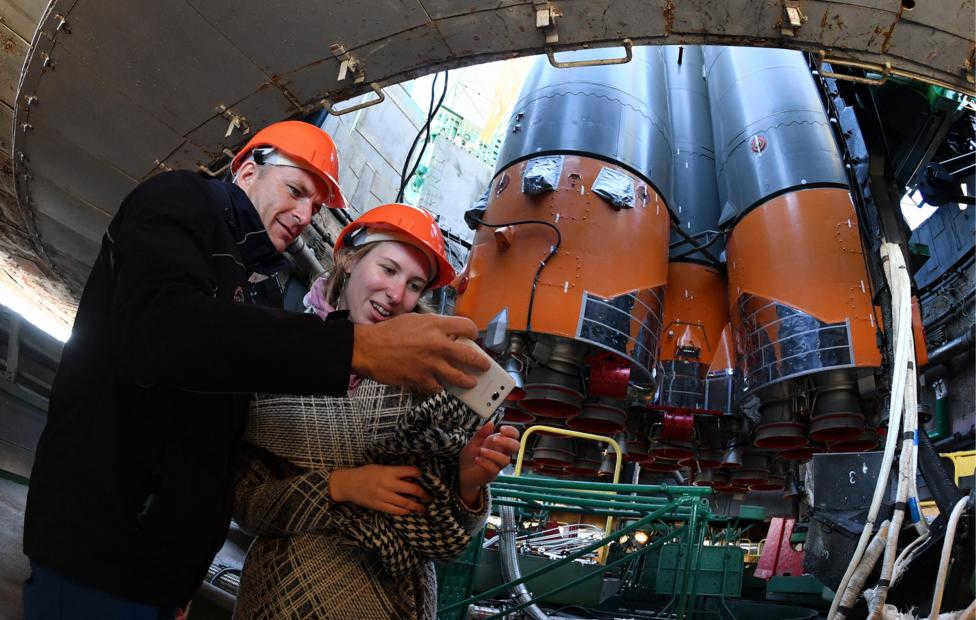
St. Jacques was chosen by the Canadian Space Agency in May 2009. In 2011, he successfully completed comprehensive space training, which included a wide range of subjects such as science and engineering courses, in-depth training on ISS systems, spacewalks, robotics, T-38 training flights, Russian language lessons, winter survival training, and water and desert survival.
Following his training, he served as a support astronaut for Expedition 35/36 to the ISS and later as a voice operator for the ISS-38 crew. More recently, he took on the role of a voice communications instructor and provided valuable assistance in the ISS Integration Division of NASA’s Astronaut Office, specifically in supporting operations related to visiting spacecraft.
Saint-Jacques has received numerous awards, is a member of various scientific organizations, and is a lifetime member of the Cambridge Philosophical Society. The Canadian astronaut enjoys engaging in mountaineering, skiing, sailing, and cycling. He holds a pilot’s license for commercial airlines with a multi-engine rating and an instrument flight clearance. Additionally, he is a licensed diver with the ability to operate advanced diving equipment. In addition to his accomplishments, he is also fluent in conversational Russian, Japanese, and Spanish.
Anne McClain, a lieutenant colonel in the U.S. Army, serves as the second flight engineer of the Soyuz MS-11 spacecraft and is a NASA astronaut.
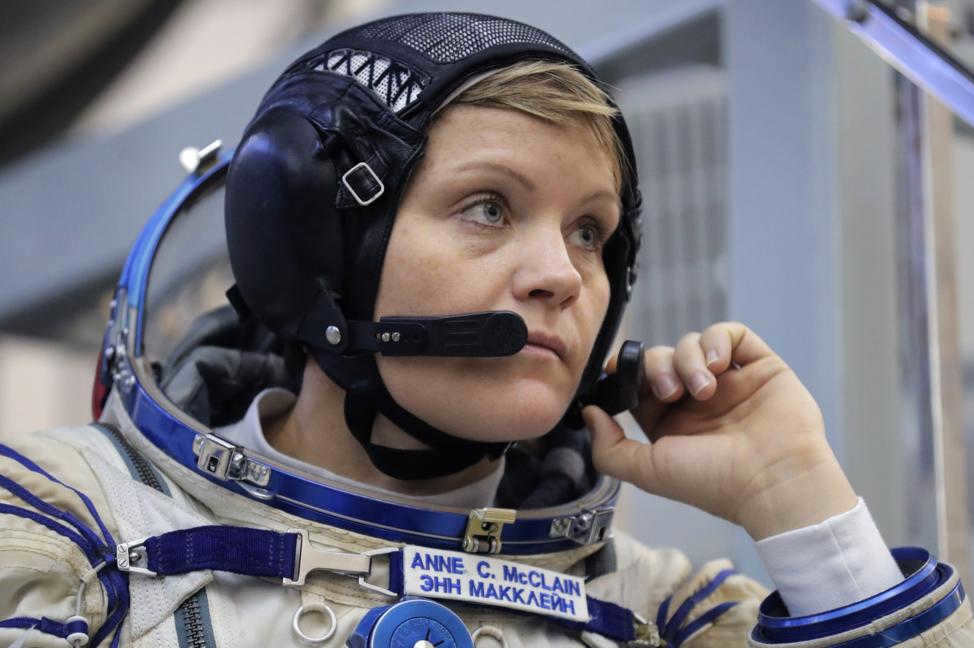
McClain was born on June 7, 1977 in Spokane, Washington. She completed her education at Gonzaga, a private Catholic school, in 1997. Following that, she obtained a Bachelor of Science degree in theoretical mechanics and aeronautical engineering from the U.S. Military Academy at West Point in 2002, and was subsequently promoted to the rank of Army officer the same year. In 2004, McClain was awarded a Marshall Scholarship, which allowed her to pursue a Master of Science in Aerospace Engineering from the University of Bath in the UK. A year later, she also completed a Master of Science in International Relations from the University of Bristol.
Additionally, she successfully finished her flight training and obtained the necessary qualifications to become a pilot of the OH-58D Kiowa Warrior reconnaissance attack helicopter. During her service in Iraq (Operation Iraqi Freedom), which lasted for a period of 15 months, she had the opportunity to engage in combat operations. Throughout this time, she completed 216 combat sorties and accumulated over 800 hours of flight time as both a ship commander and air unit commander.
Furthermore, she was later assigned as an instructor pilot for the OH-58D helicopter. In 2012, she successfully completed the C-12 Multi-engine Fixed Wing Aircraft Qualification Course. Subsequently, in June 2013, she graduated from the U.S. Navy Test Pilot School. With her vast experience and expertise, McClain currently holds the position of a senior Army aviation specialist and has accumulated more than 2,000 hours of flight time in a total of 12 different types of helicopters and airplanes.
It was in June 2013 that McClain received the opportunity to join NASA, a significant achievement in her career. After two years of rigorous training, she successfully completed the program and obtained certification for space flight.
She has received numerous medals and merit badges. Additionally, she has served as a member of the U.S. National Collegiate Softball Team and held the position of captain for the Southern Division of the U.S. Women’s National Rugby Team. Her interests consist of running, weightlifting, participating in rugby, and playing golf.
Latest Expedition Duties
Throughout their duration on the ISS, the new crew will carry out a variety of tasks and conduct 48 scientific experiments. Specifically, the crew will be responsible for collaborating with Russian Progress MS cargo vessels, loading and undocking the SpaceX DM1 commercial crew spacecraft in the cargo configuration, working with the Boe-OFT cargo spacecraft, loading and undocking the Russian crewed spacecraft Soyuz MS-09 to facilitate the return of the ISS-56/57 crew (Prokopyev, Aunyon, Gerst) back to Earth. Moreover, they will also be tasked with documenting the flight through on-board photography and videography.
The upcoming crew’s scientific investigations will center on the examination of physical and chemical phenomena, as well as various materials, within the realm of outer space. Additionally, they will conduct research pertaining to Earth exploration from a celestial vantage point, studying the effects of orbital flight conditions on the human body, as well as delving into the fields of biology and biotechnology.
